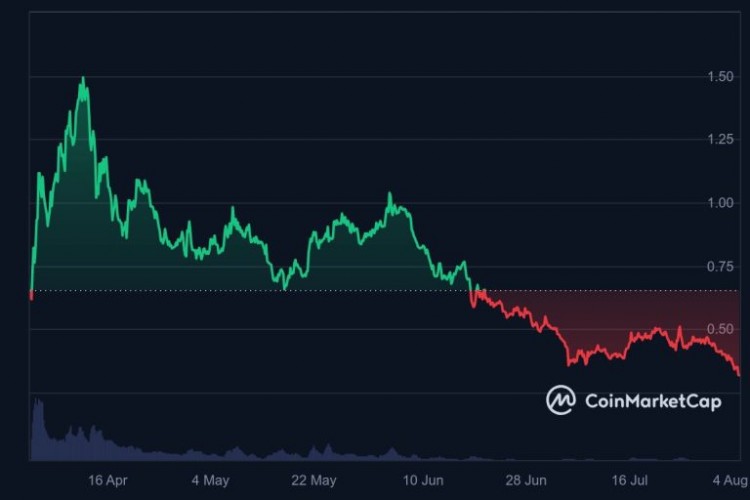时间:2024-01-25|浏览:266
以其毫无歉意和大胆的市场洞察力而闻名的传奇人物阿瑟·海耶斯(Arthur Hayes)再次发表了另一篇题为“耶伦或说话”的标志性文章。 其中有一个重磅预测,可能会从根本上动摇金融世界。 海耶斯断言,最近比特币价值的下跌不仅是加密货币雷达上的一个小现象,而且是对即将发生的金融危机的预警。 他的主张建立在财政政策、市场动态和地缘政治紧张局势之间复杂的相互作用之上,编织了一个值得关注的叙述。
金融政策中不为人知的潮流
海耶斯将关键财务人物的行动和言论进行了鲜明对比,强调了言行之间的不一致。 他指出,虽然美国财政部长珍妮特·耶伦一直在积极调整金融政策,例如战略性转向国库券以增强流动性,但美联储主席杰罗姆·鲍威尔等其他人却只是空谈多于行动。 海耶斯认为,这种差异是市场动荡的根源。
鲍威尔最近暗示可能在 2024 年降息,但缺乏具体行动,导致市场陷入投机狂潮。 海耶斯认为,虽然标普 500 指数和纳斯达克 100 指数等表面市场指标描绘了一幅繁荣的景象,但潜在的趋势却讲述了一个不同的故事。 海耶斯认为,比特币从 48,000 美元的高位跌至 40,000 美元以下,是市场健康状况的真正晴雨表,预示着流动性危机可能演变成金融崩溃。
比特币的预言性衰退
海耶斯深入加密领域,剖析了最近的比特币暴跌,驳斥了传统比特币信托基金资金外流的表面分析。 相反,他认为比特币是更深层次经济转变的预兆,特别强调了非“大而不倒”银行在面临潜在流动性紧缩时的不稳定地位。 银行定期融资计划(BTFP)的预期不再更新可能会成为压垮骆驼的最后一根稻草,将这些银行推向悬崖并引发更广泛的金融危机。
海耶斯并没有停止批评财政和货币政策; 他还对地缘政治紧张局势及其对经济稳定的作用持谨慎态度。 美国外交政策(尤其是中东政策)的错综复杂及其对全球通胀率的影响被视为可能加剧迫在眉睫的危机的关键因素。 海耶斯认为,随着经济和地缘政治压力的汇聚,现任政府未能解决这些根本问题可能会导致人们猛然觉醒。
In Hayes’ view, the current market buoyancy is a mirage, sustained by misplaced confidence in policy measures that have yet to be tested against the harsh realities of economic fundamentals. He suggests that the real test is yet to come, as the cessation of programs like the BTFP could unveil the fragility of the financial system.
Arthur Hayes delves into the precarious balance of the current financial ecosystem, emphasizing the interconnectedness of various sectors and the potential for a domino effect that could lead to a widespread crisis. He articulates how the recent policy shifts and market dynamics are setting the stage for a scenario where traditional financial institutions could face unprecedented stress, leading to a cascade of failures that could ripple through the economy.
Hayes points to the significant reduction in the Federal Reserve’s balance sheet through Quantitative Tightening (QT) and the implications of this contraction on dollar liquidity. This reduction, coupled with the shifting borrowing patterns towards T-bills by the US Treasury, is creating a liquidity vacuum that could suck in various financial players, leaving them gasping for air. The crux of Hayes’ argument lies in the liquidity levels and their critical role in maintaining financial stability.
Furthermore, Hayes explores the delicate balance between inflation control and economic growth, highlighting the Federal Reserve’s tightrope walk in managing interest rates. The potential rate cuts, seen as a lifeline for struggling banks, could have far-reaching implications beyond the banking sector, affecting everything from consumer spending to corporate investments. Hayes suggests that a misstep in this balancing act could trigger a chain reaction, undermining the fragile recovery and pushing the economy into a downturn.
The cryptocurrency market, with Bitcoin at its helm, is portrayed by Hayes as a barometer for the broader financial climate. The fluctuations in Bitcoin’s price are not random noise but signals reflecting underlying economic currents and investor sentiment. Hayes’ analysis of the crypto market is not just about digital currencies but serves as a commentary on the broader financial ecosystem’s health and the looming challenges it faces.
In a narrative that intertwines the fate of cryptocurrencies with the stability of the global financial system, Hayes stands out as a voice of reason amidst the cacophony of market speculation. His analysis, steeped in a deep understanding of market mechanics and geopolitical realities, offers a sobering perspective on the fragile state of our financial ecosystem.









![[加密市场分析师]现货比特币 ETF:Arthur Hayes 预测巨大转变](/img/20240127/3341857-1.jpg)